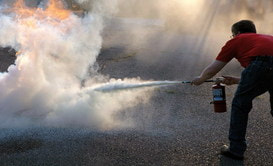
December 19, 2014 – Central Pennsylvania residents now have access to Exede® by ViaSat, a high-speed satellite Internet service earning awards and recognition nationwide. The 12 Mbps baseline download speed offered by Exede Internet is eight times faster than previous generation satellite services – and often significantly faster than average DSL service.
Powered by ViaSat-1 – officially recognized as the World’s Highest Capacity Communications Satellite with a Guinness World Records title – Exede service has moved into the mainstream of Internet options. A February 2013 FCC study based on performance tests reported that Exede Internet outperforms all other ISPs in delivering promised speeds to subscribers, with 90 percent of Exede subscribers receiving 140 percent or better of the advertised 12 Mbps download speed during peak periods. Popular Science also named the innovative satellite system and Exede Internet as a Best of What’s New award winner for 2012.
One-Stop Communications provides the award-winning service for Central Pennsylvania. “As a local dealer serving this community for many years, I’m pleased to provide super-fast Internet to households that have never been able to get speeds like this in the past,”said Michael Buffington, President, of One-Stop Communications. “My customers are very pleased with the speed and reliability of Exede Internet, and we look forward to providing service to many more customers here in Central Pennsylvania.”
The consistently fast performance of the Exede satellite Internet service has helped ViaSat reach more than 285,000 subscribers on ViaSat-1 in its first year of operation. The total subscriber count across all ViaSat satellites has surpassed 500,000 for the first time. Subscribers also enjoy 100 percent U.S.-based customer support. Approximately 40 percent of new Exede Internet subscribers are choosing the satellite service over other alternatives available to them, such as DSL, cable, and mobile wireless for fixed home use – a major shift from the previous generations of satellite Internet service, often considered a “last resort” for those with no other alternative.
About Exede (www.exede.com)
Exede® Internet by ViaSat, Inc. delivers high-speed Internet to more than 285,000 subscribers across the U.S. Powered by ViaSat-1, the world’s highest-capacity satellite uses spot-beam technology to cover approximately 80 percent of the U.S. population. With download speeds up to 12 Mbps, Exede has transformed satellite Internet for households that previously had slow, inadequate Internet service. It is also proving to be a popular, competitive alternative to residential DSL and wireless Internet. In the FCC’s annual benchmarking report, Measuring Broadband America 2013, Exede led all Internet service providers in surpassing advertised speeds. ViaSat-1 earned a Guinness World Records® achievement as the highest-capacity communications satellite in the world at the time of its launch in October 2011. Popular Science also named the innovative satellite system and Exede Internet as a Best of What’s New Award Winner for 2012.
About ViaSat (www.viasat.com)
ViaSat delivers fast, secure communications, Internet, and network access to virtually any location for consumers, governments, enterprise, and the military. The company offers fixed and mobile satellite network services including Exede® by ViaSat, which features ViaSat-1, the world’s highest capacity satellite; service to more than 1,750 mobile platforms, including Yonder® Ku-band mobile Internet; satellite broadband networking systems; and network-centric military communication systems and cybersecurity products for the U.S. and allied governments. ViaSat also offers communication system design and a number of complementary products and technologies. Based in Carlsbad, California, ViaSat employs over 2,500 people in a number of locations worldwide for technology development, customer service, and network operations.




